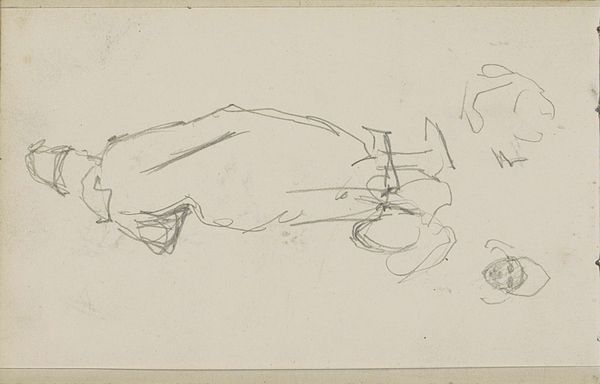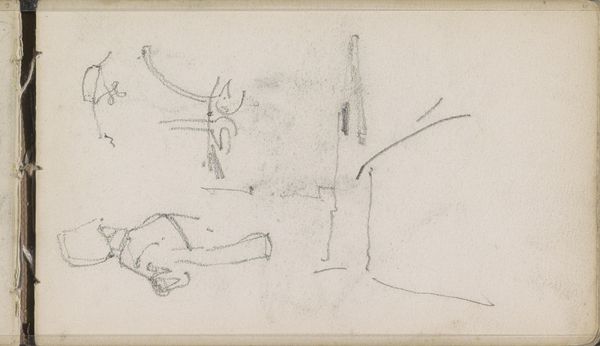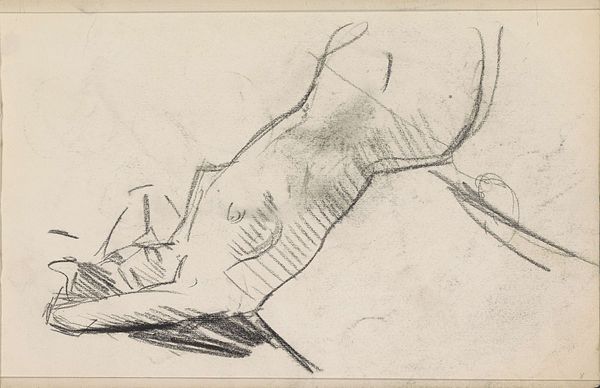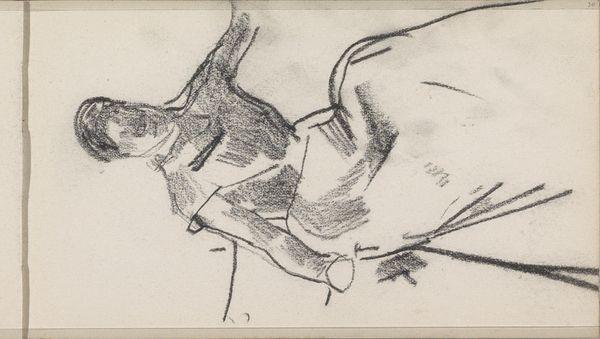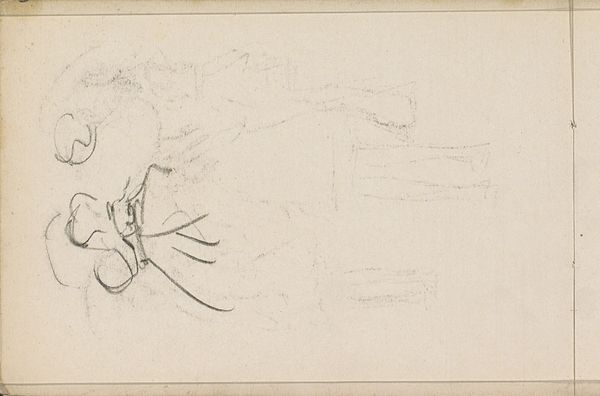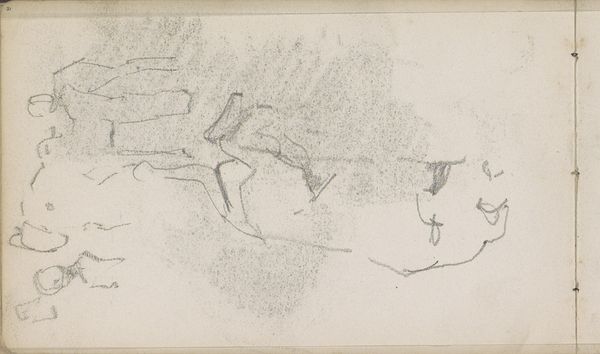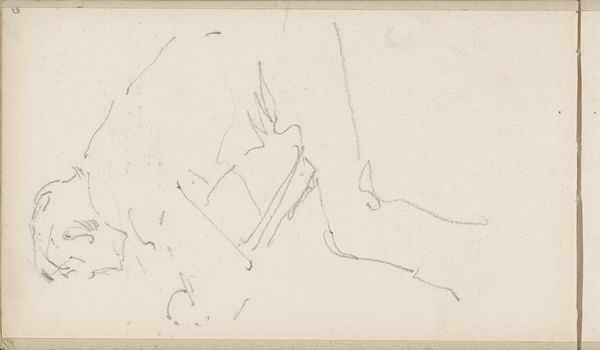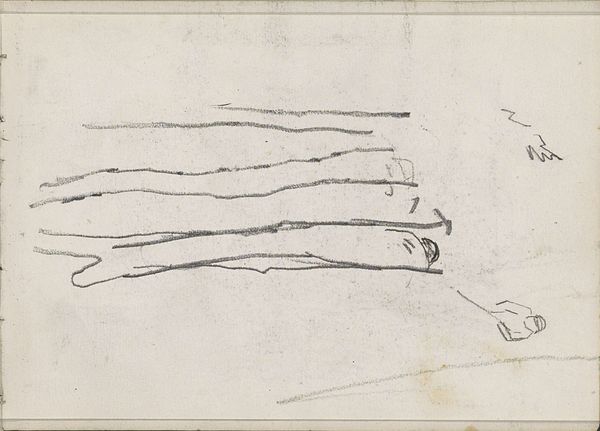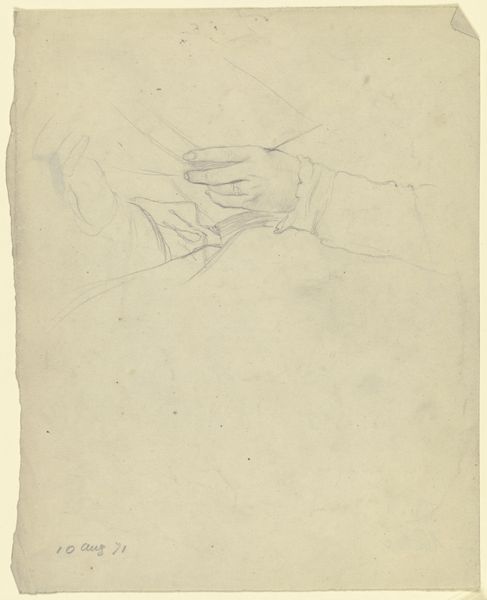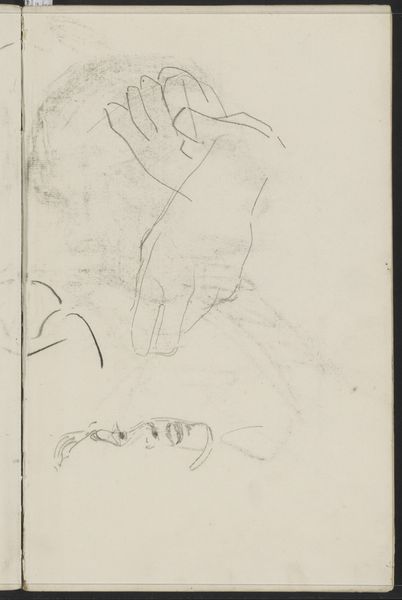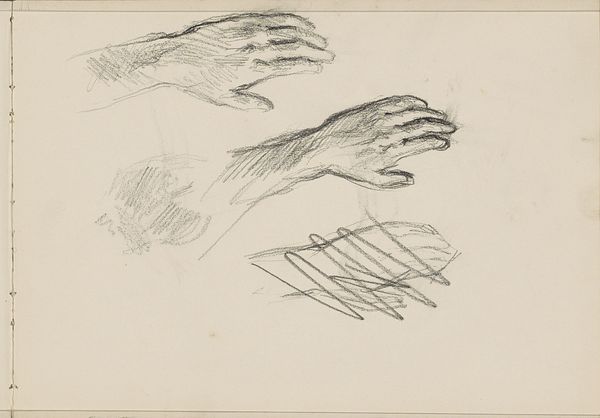
drawing, paper, pencil
#
portrait
#
drawing
#
impressionism
#
paper
#
pencil
Copyright: Rijks Museum: Open Domain
Curator: Before us is “Studies,” a pencil drawing on paper created circa 1883 to 1885 by the Dutch artist George Hendrik Breitner, currently held in the Rijksmuseum collection. Editor: It feels so immediate. There's a rough, almost urgent quality to the sketching that makes you feel like you're right there, watching the artist at work. Is that a hand? Curator: It appears so, yes, alongside what looks like abstract considerations of form. Breitner was deeply engaged with capturing fleeting moments, inspired, like many artists of his generation, by urban life in Amsterdam. Editor: That context makes it feel like more than just technical exercise. Are we sure these are only studies, preparatory works? Look at the social conditions in Amsterdam. Isn’t the body always inherently political, especially the working-class body? I wonder, who did this hand belong to? Was this an act of observation and exploitation at the same time? Curator: The intent may very well have been documentation for later paintings, but the drawing also holds inherent aesthetic value. I wouldn't use the term exploitation but indeed the social backdrop against which Breitner developed these “studies” are key to understand his later depiction of ordinary citizens. His decision to sketch such figures reveals an artistic strategy to validate such realities on canvas. The quickness here emphasizes modern themes, rejecting idealized traditional portraiture. Editor: It pushes the boundaries between the academic and something far rawer and relevant. The incompleteness of it asks viewers to think, to finish the image. I appreciate how the lack of detail lets you focus on the pose itself. The light and shadows that Breitner achieves here, especially given the simple medium of pencil on paper, give volume to the model. Curator: Indeed. These impressions encapsulate the essence of his larger body of work. The museum acquired it at auction, like other examples. "Studies," while appearing preliminary, actually challenge notions of hierarchy in terms of subject matter and push towards modernity. Editor: Viewing artwork through a political or historical lens always adds extra dimension for me, as this approach has unveiled elements I would not have encountered. Curator: Art history is at its best when offering opportunities for conversations across the boundaries of what we know about artistic intention and its ability to transform the vision that a public holds regarding the significance of commonplace objects and people.
Comments
No comments
Be the first to comment and join the conversation on the ultimate creative platform.
